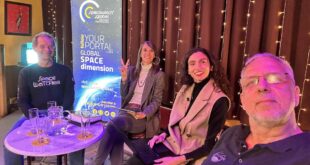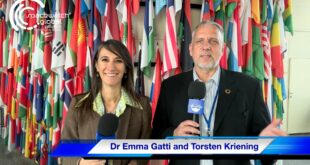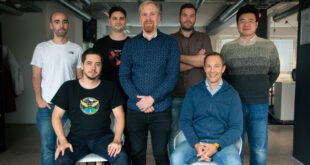On the 50th anniversary of the Apollo 11 Moon landing, we couldn’t think of a better feature than SpaceWatch.Global’s Editor, Chaitanya Gopal’s interview with Dr. John Mankins of the Moon Village Association (MVA) to discuss the ways in which this NGO is looking at the best ways of establishing a community on Earth’s closest neighbour. Enjoy this insight!
John, it’s great to have you here. Could you start by telling us a bit about yourself, please?
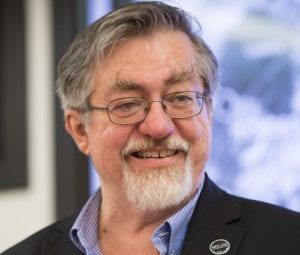 My background in education was in Physics, Literature and Public Policy Analysis. I spent ten years at NASA Jet Propulsion Laboratory and then 15 years at NASA Headquarters in Washington, DC. Since 2005, I have worked for myself.
My background in education was in Physics, Literature and Public Policy Analysis. I spent ten years at NASA Jet Propulsion Laboratory and then 15 years at NASA Headquarters in Washington, DC. Since 2005, I have worked for myself.
I worked a lot in space exploration, primarily in the technology and development of new concepts for space exploration and development of space, both for robotic and for human missions and systems. I developed, promoted and managed several large investment portfolios, ranging in size from $20 – $30 million, up to $100 million or more per year – at one point that reached $1 billion per year. So, I do have a lot of experience in advanced technology identification, analysis and in framing new systems that use advanced technologies.
One of my principal areas of emphasis has been on connecting robotic and human exploration; connecting exploration for cultural purposes; and the commercial development of space – and making those things all link together. I believe that the only way the ambitious exploration of space happens, especially using humans, is if there are benefits for society.
The most tangible benefit you can offer a decision maker is an economic one, and to do that in ways that are culturally meaningful. But even if the cultural meaning could be vast, if it’s of absolutely no value to taxpayers, then the policymakers don’t tend to invest. Certainly, on the more entrepreneurial side that I’ve been pursuing for the last 10 years, private sector investors want to see some kind of economic return. Unless, of course, they’re of nearly infinite wealth and they’re doing things for cultural reasons. But even if you’re an Elon Musk or a Jeff Bezos, you want to see a return on your investment.
Then you went on to be a part of the Moon Village Association (MVA), and currently serve as the vice president of the MVA. Tell me a bit about Moon Village, and how that came into being.
So, I’ve been a ‘Lunatic’ since the late 90s. I was the lead for technology planning in the space exploration initiative. I watched President Bush kick it off in the summer of 1989. That’s 30 years ago now. I worked a lot with Giuseppe Reibaldi who was the head of human spaceflight at ESA-ESTEC for many years. The two of us, and several others, got together two years ago in Paris and talked about the idea of creating a non-profit organisation that would pursue and promote human exploration and development of the moon.
We decided to form a sort of reflection group. After several months of talking about it and engaging other people, we concluded that there was an opportunity for a moon focused, non-profit organisation, an NGO. And the idea, the metaphor of a village, expressed in the term moon village has had been one that had been around for a few years. It’s one that Jan Woerner, the Director-General of ESA had really popularised in the months preceding the beginning of our conversations. So, we created the MVA. We had our first meeting thanks to the good graces of the International Space University (ISU), even before the Moon Village Association became a legal entity chartered in Vienna; that was in November of 2017. And we actually became legally incorporated as a non-profit in Vienna, the week before the first meeting. We’ve been in existence now for about 18 months and the way I like to describe the Moon Village Association, is that we are the industry association for the Moon.
 We have a lot of governmental organisations such as the Lunar Exploration Advisory Group (LEAG), or the International Lunar Exploration Working Group (ILEWG), that are chartered and organised by either government sponsored scientists or by government agencies. Their interests have to do with either traditional human spaceflight to the Moon; extensions of things like the Space Station Program, or they have to do with space science with attention focused on the Moon and the science that can be done there. Our interest is much broader. We are not limited to the prime contractors and we are not limited to scientific purposes. Our interests do encompass those, and one of the primes is an institutional member of the Association, but it’s much more than that. As a consequence, our institutional members (and we have a couple of dozens of them now) span small firms, entrepreneurial individuals and universities, as well as primes. And one of our challenges is that most membership organisations don’t ask very much from their members.
We have a lot of governmental organisations such as the Lunar Exploration Advisory Group (LEAG), or the International Lunar Exploration Working Group (ILEWG), that are chartered and organised by either government sponsored scientists or by government agencies. Their interests have to do with either traditional human spaceflight to the Moon; extensions of things like the Space Station Program, or they have to do with space science with attention focused on the Moon and the science that can be done there. Our interest is much broader. We are not limited to the prime contractors and we are not limited to scientific purposes. Our interests do encompass those, and one of the primes is an institutional member of the Association, but it’s much more than that. As a consequence, our institutional members (and we have a couple of dozens of them now) span small firms, entrepreneurial individuals and universities, as well as primes. And one of our challenges is that most membership organisations don’t ask very much from their members.
You join the various associations or like the American Academy for the Association of Sciences (AAAS). Every month, I get a magazine. AAAS doesn’t really expect much from me, except that I send the money each year. The MVA is trying to do more. And one of the things we’re trying to do, as an example, is to try to look beyond the next handful of years and to think about where the Moon and humanity are going to go. When you look at the government programmes, they tend to think about what will happen after the Space Station. They’re not thinking strategically about the Moon for humanity. They’re thinking about what to do next with their team of contractors or their civil servant team. And that’s one of our biggest challenges. It is to find ways to engage otherwise very busy people who have day jobs and to get them to carrying out work relating to these broader meta-goals of the Moon Village Association.
The Moon has recently come back into sharp focus with the US announcing that they want to go back to the moon, fast, very fast – and in an unprecedented fashion. However, every agency or every entity, would like to say that this is going to be a collaborative effort of going back to the Moon. Vice President Mike Pence was clear that it will not be an America-only mission and that it’s going to be a collaborative mission. However, historically, it’s not been an easy road, even for the space station. And now the big players are China and Russia and India are making their own strides towards the Moon. How do you see all of these big nations collaborating towards a Moon Village or a singular goal? And what role does the Moon Village Association play in bringing these actors together along with the commercial entities?
There’s a distinct difference between a government project and the Village. In the case of a government project, everything is top down command and control. Even if there are multiple players, like there are on the International Space Station Programme, predominantly, there’s a deciding Council. People bring money to the table. And there are contractors who implement the will of the deciding organisation with the money.
In villages or communities, there are standards, there are protocols, and there are rules. Ultimately, you come into the village to become the blacksmith, or to open a market, or you come into the village with your produce to sell at the market, and to buy from the blacksmiths. And so, there are relationships, and there are interfaces and standards, but individuals come to the village to become part of it, to contribute to it and to benefit from it. But there’s no top down command and control. We see the Moon as emerging as a village. Now, there will be government projects and programmes but there will also be entrepreneurs, there will also be non-governmental, culturally focused organisations like For All Moonkind, and we see ourselves as playing a key role in both facilitating and informing the decisions that individual players make as they come into the Moon, under the metaphor of a village.
You have built a network of commercial and institutional partners in the last two years. What are your expectations from the Moon Village Association’s partners? And how do you see their roles evolving in the years to come?
For one thing, we expect that they will come to the table with information that they’re willing to share with other participants: What are their plans? What are they hoping to accomplish? What services are they offering? What capabilities do they require? And at the same time, we’re hoping to provide to our institutional members as well as individual members, information that we glean from everybody else. So, we’re hoping to be a data clearinghouse.
In addition, some of the things that are necessary to make the metaphor of a village real, are things like standards, and it’s not standards in the sense of, here’s what we’re doing on the space station, and here’s how this interface is going to become the standard for anybody who is going to put a piece of hardware in the lunar gateway. We are looking to the next five or ten years and asking the big questions. What are we going to do about lunar mining? What are the standards going to be for power distribution in the permanently shadowed regions of the Moon? What are we going to do in terms of the emissions of gases and other materials like dust and so on? We need our institutional members to participate in the framing of those community guidelines and standards in a strategic way, as well as a tactical way. And that’s hard to do with busy people.
We are in Kuwait and the Moon Village Association is hosting a workshop promoting participation of emerging countries, much like Kuwait, in space exploration. How do you see the role of non- or emerging spacefaring nations in the Moon Village Association? And how can the youth be a part of that movement as well?
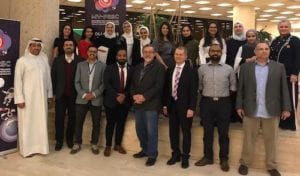 The real answer is in any way they want to! I think the fact of the 21st century, with regard to the Moon, is that getting to the Moon and doing things on the Moon, and being part of the humanity’s extension to the moon, is a question of tens of millions of dollars. It’s not billions, or tens of billions. It is not 1969 anymore! So, a relatively small, but relatively wealthy per capita country, such as Kuwait, really has the opportunity to do almost anything they wish. And be as big a player in the Moon at this moment, as the biggest countries. A small player, whether it’s a company or a country, whether it’s SpaceX or Kuwait, they can be far more agile in terms of moving forward quickly, if they wish. So, that’s one of the reasons why we’re participating in this event, and why we help to organise them.
The real answer is in any way they want to! I think the fact of the 21st century, with regard to the Moon, is that getting to the Moon and doing things on the Moon, and being part of the humanity’s extension to the moon, is a question of tens of millions of dollars. It’s not billions, or tens of billions. It is not 1969 anymore! So, a relatively small, but relatively wealthy per capita country, such as Kuwait, really has the opportunity to do almost anything they wish. And be as big a player in the Moon at this moment, as the biggest countries. A small player, whether it’s a company or a country, whether it’s SpaceX or Kuwait, they can be far more agile in terms of moving forward quickly, if they wish. So, that’s one of the reasons why we’re participating in this event, and why we help to organise them.
And finally, how important is it to tell the youth of such countries that it’s not just engineers, that can be a part of a space mission and exploration, but that all professions are welcome, be it liberal arts, policymakers, lawyers, architects and so on?
It’s vitally important. It is really important. It’s a fabulous thing that this is the week in which the first image of a super-giant black hole was released to the public. It is a global scientific achievement. Unprecedented. But every night, anyone on the planet can go outside and look at the Moon. Everyone. Every individual has a vested interest in what happens on and to Earth’s Moon. And so, it’s something that has to involve everybody.
That’s a brilliant point to end it on. Thank you, John.
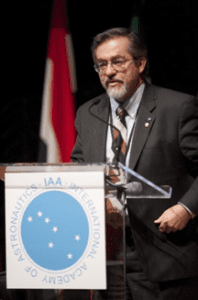 Bio: John C. Mankins has been recognized as the leading expert in the field of space solar power (SSP). He is an entrepreneur and internationally recognized leader in technology and systems innovation and management. He is the Founder and President of Mankins Space Technology, Inc., the President of Artemis Innovation Management Solutions LLC, Vice President and member of the Board of the Moon Village Association, and is a member of the faculty of the online Kepler Space Institute (KSI). He was formerly Chief Technologist for Human Exploration and Development of Space (HEDS) at NASA Headquarters in Washington, D.C.
Bio: John C. Mankins has been recognized as the leading expert in the field of space solar power (SSP). He is an entrepreneur and internationally recognized leader in technology and systems innovation and management. He is the Founder and President of Mankins Space Technology, Inc., the President of Artemis Innovation Management Solutions LLC, Vice President and member of the Board of the Moon Village Association, and is a member of the faculty of the online Kepler Space Institute (KSI). He was formerly Chief Technologist for Human Exploration and Development of Space (HEDS) at NASA Headquarters in Washington, D.C.
SpaceWatch.Global thanks Dr. John Mankins for the interview.


